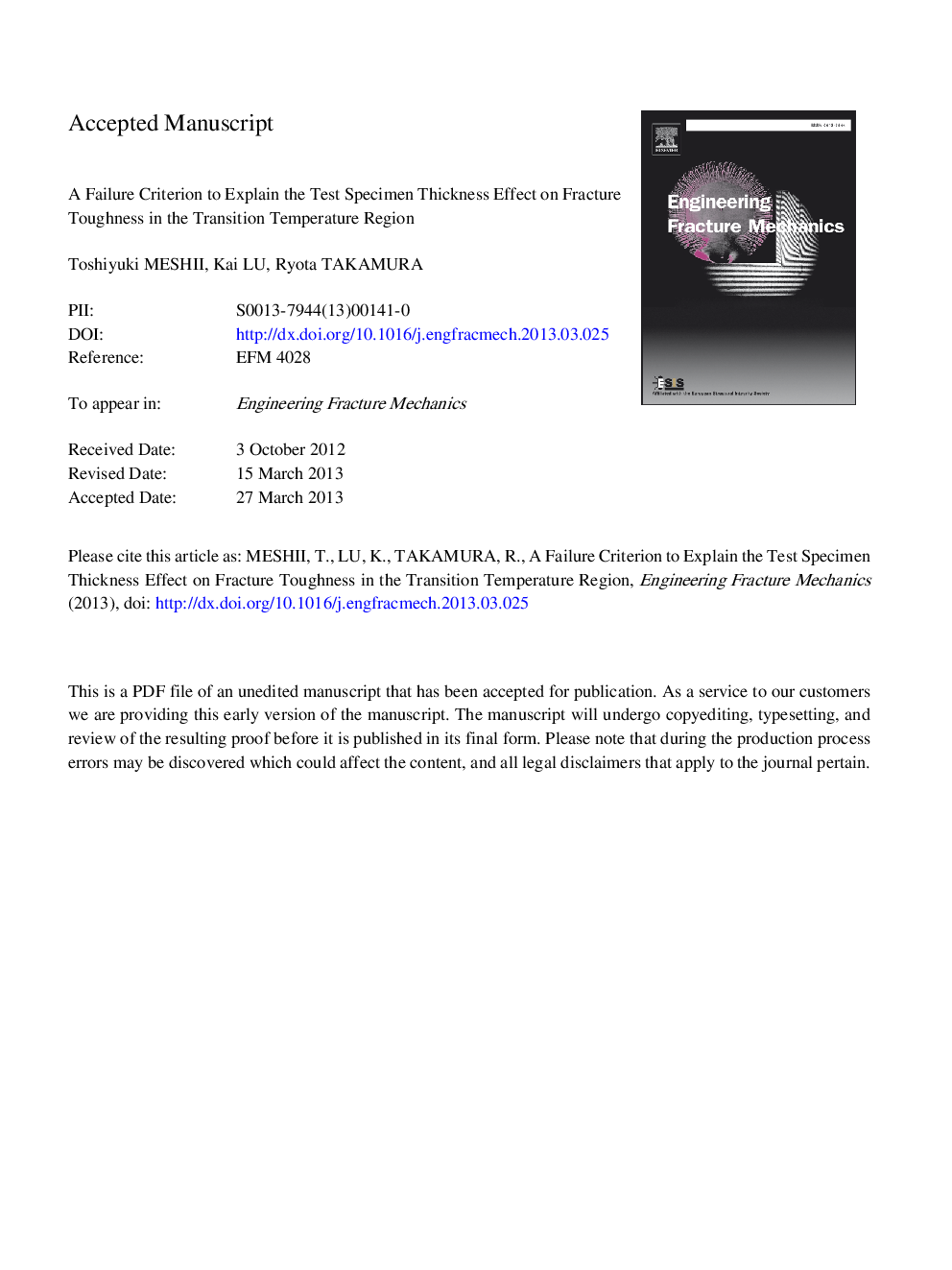| کد مقاله | کد نشریه | سال انتشار | مقاله انگلیسی | نسخه تمام متن |
|---|---|---|---|---|
| 7170008 | 1463121 | 2013 | 44 صفحه PDF | دانلود رایگان |
عنوان انگلیسی مقاله ISI
A failure criterion to explain the test specimen thickness effect on fracture toughness in the transition temperature region
ترجمه فارسی عنوان
معیار شکست برای توضیح اثر ضخامت نمونه بر روی چقرمگی شکست در منطقه دمای انتقال است
دانلود مقاله + سفارش ترجمه
دانلود مقاله ISI انگلیسی
رایگان برای ایرانیان
کلمات کلیدی
موضوعات مرتبط
مهندسی و علوم پایه
سایر رشته های مهندسی
مهندسی مکانیک
چکیده انگلیسی
This paper considered the test specimen thickness (TST) effect on the fracture toughness of a material Jc in the transition temperature region for 3 point bending (3 PB) specimens. Fracture toughness tests and elastic-plastic finite element analyses (FEA) with non-standard test specimens, which are non-standard because the specimen thickness-to-width ratio B/W was varied in the range of 0.25-1.5, were conducted. Based on these tests and the FEA results, it was demonstrated that the “planar” (4δt, Ï22c) failure criterion-which states that cleavage fracture after significant plastic deformation occurs when the crack opening stress Ï22 at a distance from the crack-tip that is equal to four times the crack-tip opening displacement δt exceeds a critical value Ï22c-was verified to effectively explain the TST effect. This (4δt, Ï22c) criterion also successfully predicted the tendency of Jc to saturate to some bounding value for B/W = 1.0. This tendency was similar to that of the T33-stress, which is the out-of-plane elastic crack-tip constraint parameter. Because the (4δt, Ï22c) criterion could predict the TST effect on Jc and because the criterion could predict the bounded behavior of Jc for large B/W, the TST effect was concluded to be mainly mechanical in nature, which the weakest link model fails to predict. The mechanical cause of the TST effect on Jc was considered to be an out-of-plane crack-tip constraint, and one of its measures of magnitude is the T33-stress.
ناشر
Database: Elsevier - ScienceDirect (ساینس دایرکت)
Journal: Engineering Fracture Mechanics - Volume 104, May 2013, Pages 184-197
Journal: Engineering Fracture Mechanics - Volume 104, May 2013, Pages 184-197
نویسندگان
Toshiyuki Meshii, Kai Lu, Ryota Takamura,
